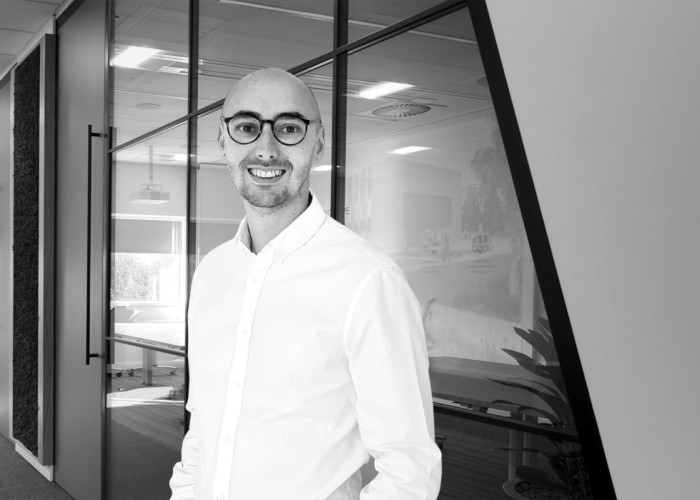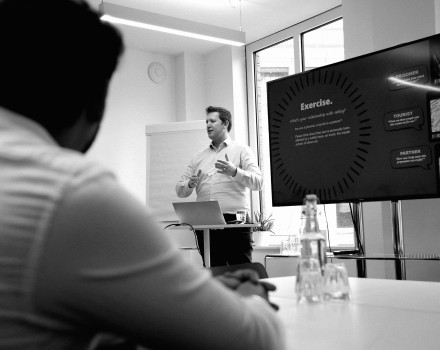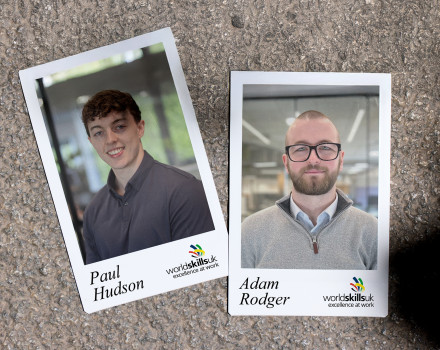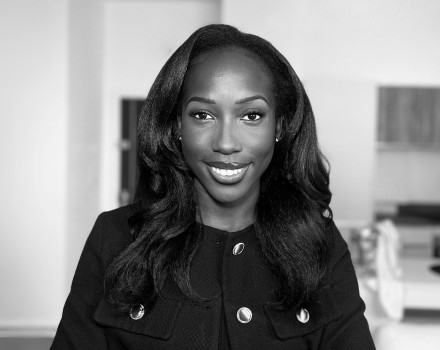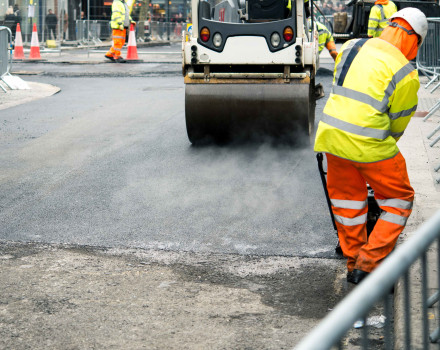What does your role involve?
It’s probably quite different from most people’s views of architecture. It’s not all drawing facades on big sheets of paper and Grand Designs! It’s a really broad role and covers a lot of different tasks – mostly controlled by which RIBA stage the projects you’re working on. I’ve probably spent most of my time recently in Stage 4, Technical design, so I’m drawing up details, doing product specifications, writing reports and coordinating with other design disciplines. Sometimes it’s the large-scale drawings, other times it’s really small but crucial details – for example sourcing this one part you need and having to go to the nth degree to make sure it’s right.
I’ve been here 13 years now so have been involved in projects across the majority of our sectors, but mainly rail, aviation, custodial and life sciences. That’s one of the real plus points of the way I’ve done my career – you get to work on so many different things as a result of starting work so early as opposed to the traditional university route.
How did you get into architecture?
When I was a kid, I loved playing ‘The Sims’ and was always drawing houses on it, and when my parents had an extension done, I sat there and copied all the plans up by hand. Not your usual hobbies as a child perhaps, but there was obviously something that attracted me to it! By the time I did my A-Levels I knew I wanted to do architecture, so I chose the subjects they recommended, but when it came to university, I was fed up of studying full time. That route just wasn’t for me, so I looked on the RIBA website and started writing around practices. BakerHicks were one of the ones who gave me an interview, they offered me a place and I liked the flexibility they offered. At that point I didn’t know if I wanted to be an architectural technician or an architect, but they gave me a year of working on different things to work that out. Then I started studying for my degree part time over four years, one day a week during term-time I went off to university and the remaining days I was working. I did my degree, masters and Part 3 Diploma that way; I started in 2009 and qualified last year.
How did you find studying and working at the same time?
There's the challenge of fitting your studying around work hours, with a lot of time spent at desks and the social life taking a hit at times, but there are also some huge positives of going down this route. I was exposed to how the industry works right from the start and gained so much project experience, which as I progressed really came into its own. I noticed this especially when I did my Part 3 as they really take your whole history into account and, thanks to working alongside studying, I had this bank of experience that I just wouldn’t have had if I’d gone to university full time.
The support the company has given me has been incredible, there was always someone I could ask if I had any questions or was struggling with anything and they supported me through study days and time off to prepare for exams which made a big difference. I also had a mentor who was further ahead in the process and we’d go through what I was doing and bounce ideas off each other. Having someone like that there was absolutely invaluable.
Do you have any advice for anyone thinking of taking this route into the industry?
It may seem obvious, but don’t be afraid to ask questions or for help. There’s always someone who is willing talk through things with you and share their knowledge. The other main thing is to make the most of the experiences you get offered, take everything going as it’s what is the big differentiator. I’d definitely recommend this route, studying part-time and working gave me a whole new level of exposure to what the industry is really like, plus there’s the freedom that earning whilst you study brings.
What do you enjoy most about your role?
What is really nice is when you’ve had a design input on a building and then get the chance to go see it once it’s been built. You’ve had an impact on people and their surroundings and it’s a real privilege to be able to see what you’ve done in real life. That and the variety of the role, there’s so many different aspects and always something new and interesting to learn. You can be a bit technical and creative all at once, architecture caters for both at the same time.
What's been your biggest achievement so far?
Getting qualified, without a doubt. It’s been 11 years of work in total and when I look back at where I was, both professionally and personally, when I started this journey, I can see a massive difference in myself. The final exam was very stressful, especially as we were in lockdown then, so I had to do the interview on Teams. But it was an amazing feeling to pass - I must have called everyone I knew to let them know I can officially call myself an architect now!
